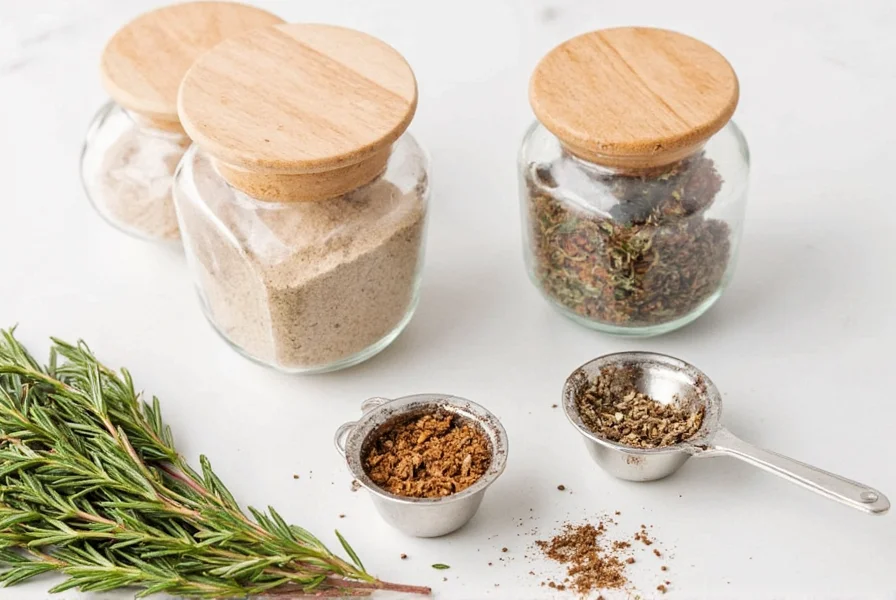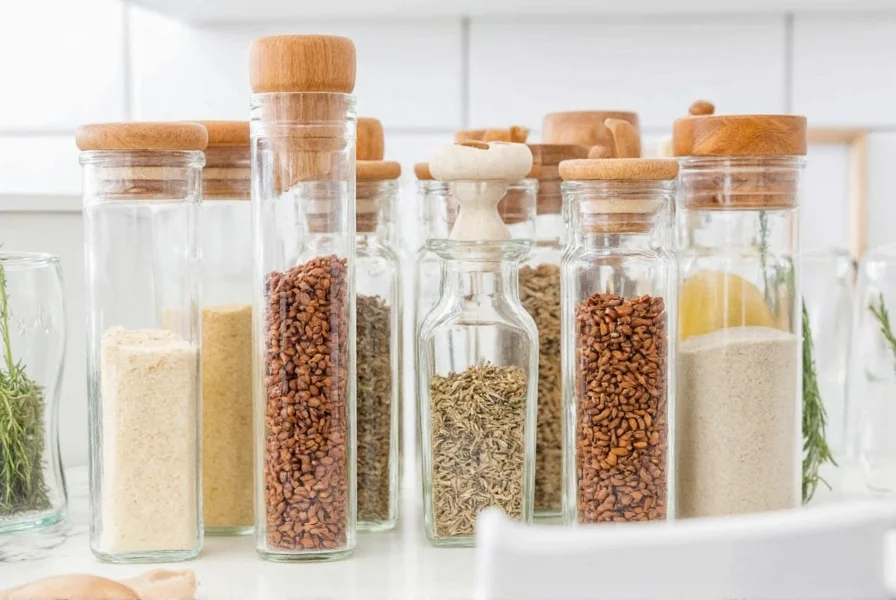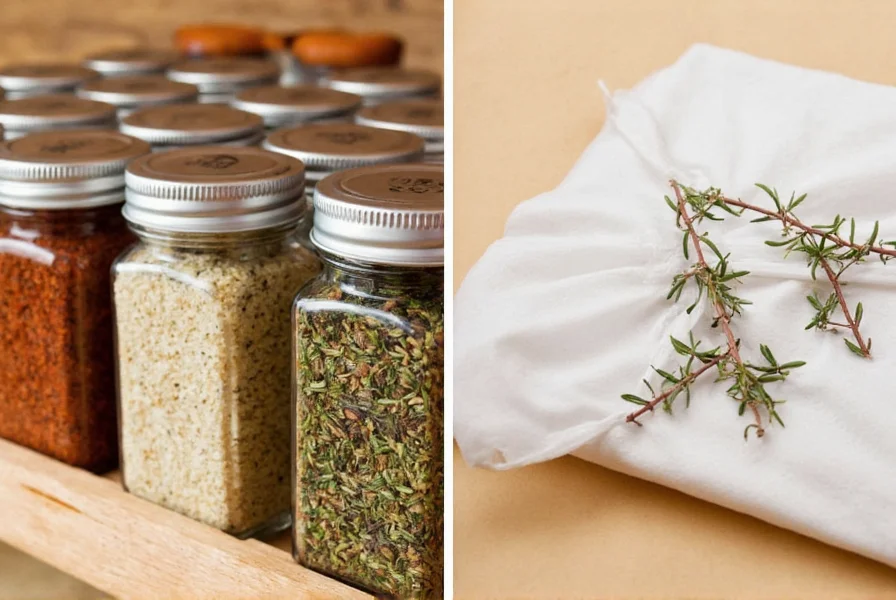If you're looking for ways to preserve rosemary's flavor and get the most out of this versatile herb, you've come to the right place. Proper storage and smart usage techniques can transform your cooking experience, ensuring rosemary stays fresh, aromatic, and ready to enhance any dish.
In this guide, we'll share 10 expert tips specifically for rosemary storage and usage, helping you maintain its potency, elevate your culinary creations, and even discover creative applications beyond the kitchen.
- Why Rosemary?
- Storage Hacks That Keep Rosemary Fresh Longer
- Clever Ways to Use Rosemary Beyond Traditional Cooking
- Buying Guide: Fresh vs Dried Rosemary
- Rosemary Beyond the Kitchen: Beauty, Cleaning, and More
- Frequently Asked Questions About Rosemary
- Final Thoughts
Why Rosemary? A Flavor-Packed Powerhouse
Rosemary is more than just a culinary herb—it's a versatile ingredient with a distinctive pine-like aroma and robust flavor that enhances everything from roasted meats to baked goods. Known for its needle-like leaves and strong scent, rosemary adds depth to dishes while offering antioxidant and anti-inflammatory benefits.
Rosemary's legacy spans millennia, evolving from ancient ritualistic uses to modern culinary and therapeutic applications. Historical records show it was employed in Egyptian burial ceremonies around 1500 BCE (as documented in the Ebers Papyrus), valued by Romans for memory enhancement (noted by Pliny the Elder in Natural History), and prescribed by medieval healer Hildegard von Bingen for heart and mood support. By the 17th century, it became a standard apothecary remedy, and contemporary research validates many traditional uses—such as its cognitive benefits—through rigorous scientific analysis.
Whether used fresh or dried, rosemary's versatility makes it a kitchen essential. Proper storage and usage techniques ensure you get the most from this herb, preserving its flavor and extending its usability.
Storage Hacks That Keep Rosemary Fresh Longer
Correct storage is key to maintaining rosemary's freshness and flavor. Here are the most effective methods:
| Storage Method | Shelf Life | Best For |
|---|---|---|
| Refrigeration (in water) | 1–2 weeks | Immediate use |
| Freezing (oil cubes) | 3–6 months | Cooking applications |
| Air-drying + airtight container | 6–12 months | Spice blends, seasoning mixes |
| Vacuum sealing | 1 year+ | Long-term storage |

While these methods work well under standard conditions, their effectiveness varies by environment. Refrigeration in water risks mold growth in high-humidity climates (above 60% relative humidity), as confirmed by USDA Food Safety guidelines. Vacuum sealing requires absolute dryness (<10% moisture content) to prevent botulism in low-acid herbs. Always adjust techniques based on local conditions—drying time may double in coastal regions versus arid climates. Source: USDA FoodKeeper Guidelines
- Refrigerate Fresh Rosemary in a Glass of Water: Place fresh sprigs in a glass with water, cover loosely with a plastic bag, and store in the fridge. Refresh water every few days to maintain freshness.
- Freeze Rosemary in Olive Oil Cubes: Chop rosemary and freeze it in olive oil within ice cube trays. These cubes are perfect for adding instant flavor to sautés, sauces, and roasted meats.
- Dry It Properly: Hang fresh sprigs upside down in a warm, dry place until completely dry (1–2 weeks). Store dried rosemary in an airtight container away from light to preserve flavor.
- Vacuum Seal for Bulk Storage: For large quantities, vacuum-seal dried rosemary to lock in freshness for over a year.
- Avoid Moisture and Light: Store dried rosemary in a cool, dark pantry to prevent mold and flavor degradation.
Clever Ways to Use Rosemary Beyond Traditional Cooking
While rosemary is commonly used in roasts and breads, its applications extend far beyond traditional cooking. Try these creative ideas:
- Rosemary-Infused Honey: Warm honey with rosemary sprigs for 2–3 hours, then strain. Drizzle over cheese, grilled peaches, or yogurt for a sweet and savory treat.
- DIY Rosemary Salt: Toast coarse sea salt with crushed dried rosemary for a flavorful seasoning perfect for steaks, cocktails, or roasted vegetables.
- Crusty Garlic-Rosemary Bread: Mix rosemary with garlic and softened butter, then spread on crusty bread before baking for an aromatic side dish.
- Herb-Butter Popcorn: Melt butter with rosemary and salt for a gourmet popcorn topping that elevates movie night snacks.
- Marinades and Rubs: Combine rosemary with paprika, cumin, lemon zest, and olive oil for a zesty rub that enhances lamb, pork, or chicken.

Buying Guide: Fresh vs Dried Rosemary
Choosing between fresh and dried rosemary depends on your needs and intended use. Here's what to consider:
| Feature | Fresh Rosemary | Dried Rosemary |
|---|---|---|
| Flavor Intensity | Mild to medium | Strong and concentrated |
| Storage Time | 1–2 weeks | 6–12 months |
| Usage Scenarios | Garnishing, infusion, immediate cooking | Slow cooking, baking, spice blends |
Fresh Rosemary
- Pros: Intense aroma, better texture for garnishing, ideal for infusions
- Cons: Short shelf life, requires refrigeration
- Best For: Immediate use in roasts, soups, cocktails, or as a decorative element
Dried Rosemary
- Pros: Longer shelf life, easier storage, more concentrated flavor
- Cons: Less aromatic than fresh, can be overpowering if not used carefully
- Best For: Seasoning mixes, baked goods, stews, and slow-cooked dishes
Recommended Brands & Products
- Spice Garden Organic Rosemary Leaves: Sustainably grown, organic-certified, perfect for spice blends
- Simply Organic Rosemary: Rich in essential oils, excellent for herbal teas and savory dishes
- Bulk Basket Dried Rosemary: Affordable for large-scale cooking or DIY projects like sachets and candles

Rosemary Beyond the Kitchen: Beauty, Cleaning, and More
Rosemary's uses extend far beyond the kitchen. Its natural properties make it valuable for beauty, cleaning, and home care:
- Rosemary Hair Rinse: Boil rosemary sprigs in water, cool, and use as a final rinse to strengthen hair and reduce dandruff
- All-Natural Cleaner: Infuse rosemary in vinegar or alcohol for an antimicrobial cleaning spray perfect for counters and mirrors
- Homemade Candles: Press dried rosemary into beeswax candles for a rustic, aromatic touch to your decor
- Relaxing Sachets: Fill fabric pouches with dried rosemary and lavender for soothing sleep aids or linen fresheners
- Aromatherapy: Diffuse rosemary essential oil to boost concentration, relieve stress, and enhance memory retention
Frequently Asked Questions About Rosemary
Is rosemary considered a spice or an herb?
Rosemary is technically an herb, not a spice. Herbs come from the leafy parts of plants, while spices come from other parts like seeds, bark, or roots. However, in culinary contexts, dried rosemary is often grouped with spices in the spice rack.
How can I tell if my rosemary has gone bad?
Fresh rosemary has gone bad when it becomes slimy, develops black spots, or loses its characteristic pine-like aroma. Dried rosemary has expired when it loses its fragrance completely and tastes dusty or stale. Properly stored dried rosemary should retain good flavor for 6-12 months.
What's the conversion ratio between fresh and dried rosemary?
The general rule is 1 teaspoon of dried rosemary equals 1 tablespoon of fresh rosemary. Dried herbs are more concentrated, so you need less. When substituting, start with less dried rosemary than the recipe calls for with fresh, then adjust to taste.
Can rosemary help with memory and concentration?
A 2012 University of Northumbria study demonstrated that rosemary aroma (specifically 1,8-cineole) improved memory performance by 60-75% in controlled trials. Participants exposed to rosemary essential oil showed significantly better long-term memory retention compared to controls. Source: University of Northumbria Research
What dishes pair best with rosemary?
Rosemary complements roasted meats (especially lamb and chicken), potatoes, tomatoes, beans, lemon, garlic, and olive oil. It works well in Mediterranean cuisine, breads, soups, stews, and even some desserts like lemon-rosemary shortbread. Its strong flavor means it stands up well to long cooking times.
Final Thoughts
Rosemary is a versatile powerhouse that deserves a spot in every kitchen (and beyond!). By mastering proper storage and exploring innovative ways to use it, you can transform everyday meals into aromatic masterpieces and elevate your lifestyle with its natural benefits.
Whether you're roasting up a storm or crafting homemade beauty products, remember: a little rosemary goes a long way. So go ahead — stock up, freeze it, infuse it, and most importantly… enjoy it!

Stay tuned for more spice hacks and insider tips on maximizing flavor without breaking a sweat!











 浙公网安备
33010002000092号
浙公网安备
33010002000092号 浙B2-20120091-4
浙B2-20120091-4